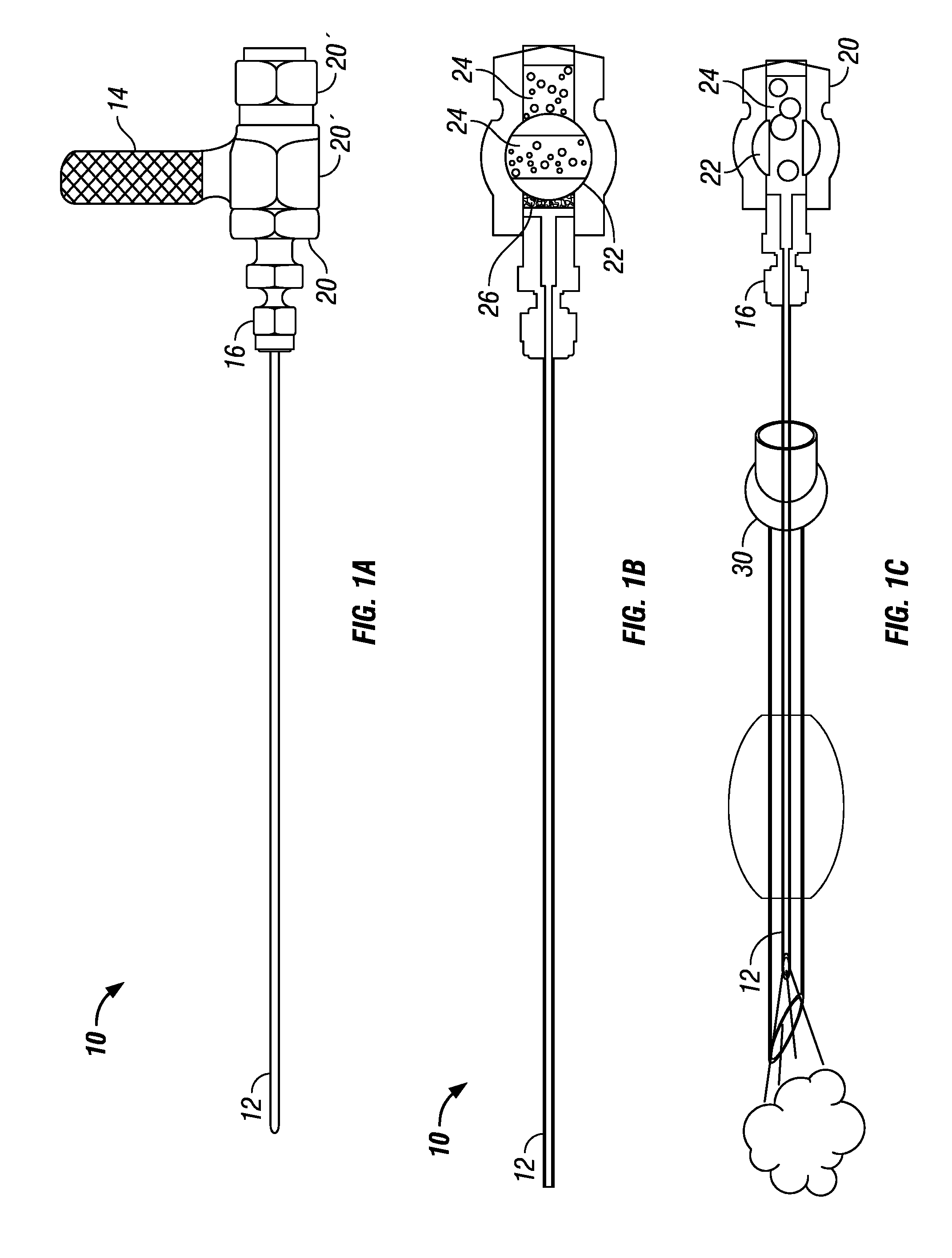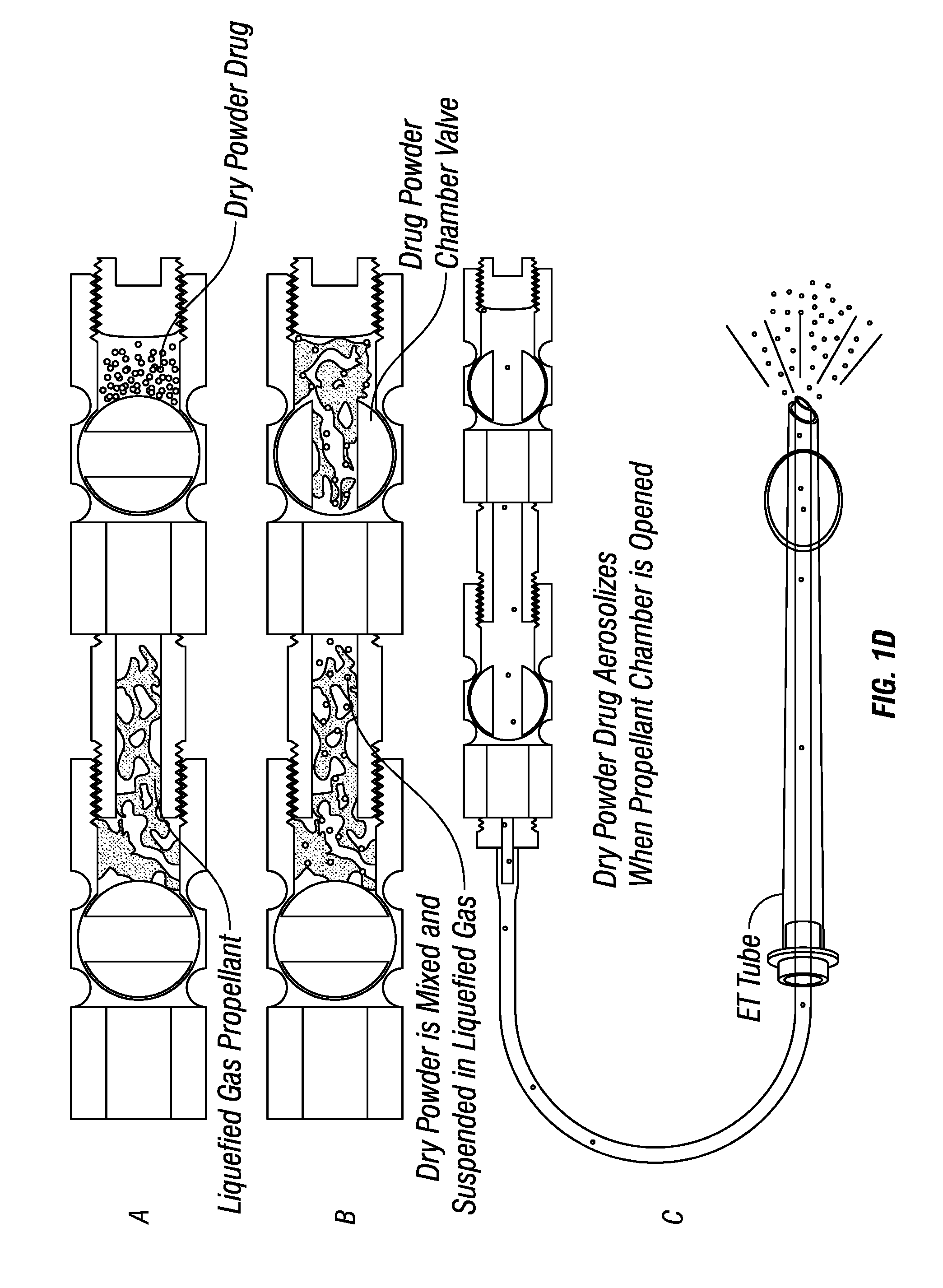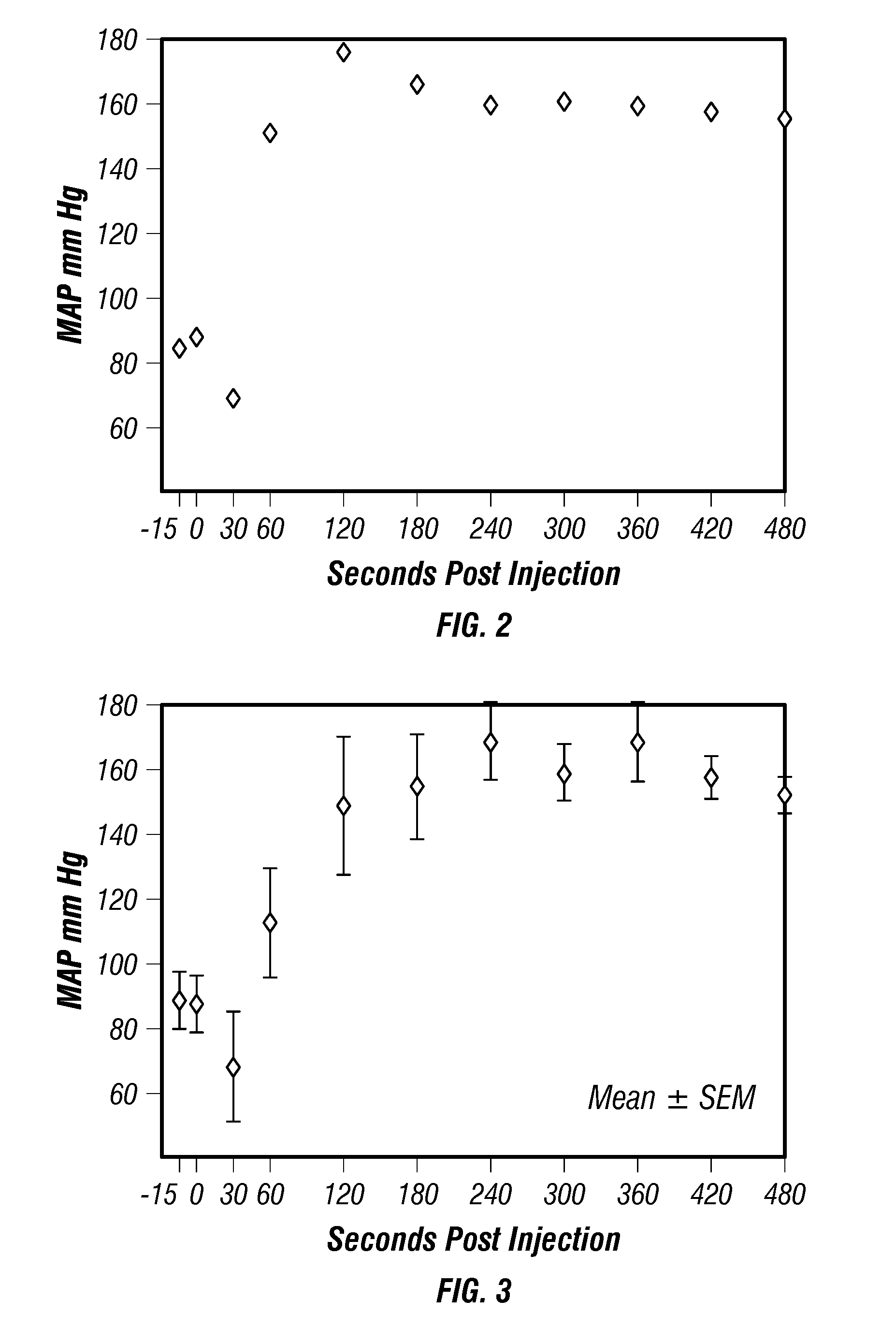Dry powder drug delivery formulations, methods of use, and devices therefore
a technology of dry powder and therapeutic agents, applied in the direction of drug compositions, peptide/protein ingredients, biocide, etc., can solve the problems of inability to combat situations or civilian mass casualties, inability to use, and inability to achieve rapid and accurate treatment, so as to prolong the shelf life of the system and formulation, the effect of prolonging the system's usage extremes and being more resistant to fluctuations in pressur
- Summary
- Abstract
- Description
- Claims
- Application Information
AI Technical Summary
Benefits of technology
Problems solved by technology
Method used
Image
Examples
example 1
Epinephrine Investigative Study
[0114]The rapid uptake of epinephrine via a DPET (dry powder endotracheal drug delivery) method in a normovolemic swine model (n=5) was demonstrated, using experimental methods according to established procedures, such as those described by Wang, et al. [Intensive Care Med., Vol. 28, pp. 352-357 (2002)], and Zanen, et al. [Int. J. Pharm., Vol. 114, pp. 111-115 (1995)]. FIG. 2 illustrates a representative experiment showing the increase in MAP in normovolemic anesthetized swine. As can be seen from the figure, this plot demonstrates that a relatively large dose of dry powder epinephrine (e.g., ≧20 mg) can be insufflated into the lung and be absorbed and placed into the circulating blood within 10 to 20 seconds of administration. The standard IV dosage was used for both CV and DPET routes. At 30 s post-injection an increase in MAP was detected, as illustrated in FIG. 3. Epinephrine delivered by the DPET route described herein increased MAP by more than 6...
example 2
Exemplary (Prophetic) General Procedure
[0117]We have substantial experience with acute swine studies and our experimental protocols are similar to other leading CPR researchers, such as described in the Wang and Zolen articles, referenced supra. Pigs will be sedated and intravenous (IV) access via a peripheral ear vein will be used to infuse alpha-choralose for general anesthesia. Pigs will be orotracheally intubated and ventilated with room air, using a volume-cycled ventilator (Harvard Apparatus, South Natick, Mass.). Ventilation will be begun at a tidal volume of 15-20 cc / kg, a rate of 12-16 breaths / min. Ventilation will be adjusted to maintain end-tidal carbon dioxide between 35 to 45 torr as measured with a Datex capnometer, such as the MULTICAP® or NORMOCAP® capnometers (available from Datex Instrumentarium Corp., Helsinki, Finland). Core body temperature will be measured from the pulmonary arterial catheter and will be maintained by use of a heating blanket as needed. We will...
example 3
Proposed Future Experiments
[0122]These experiments are organized into two series, each of which addresses one of the present experimental aims. Animal preparation will be the same for both series. All experiments will be performed on anesthetized pigs subjected to 6-minutes of untreated ventricular fibrillation (VF); thereafter, a series of similar protocols will be performed, but using different devices.
[0123]The first series of experiments (Series 1) will be carried out to determine the pharmacokinetics and effectiveness of the currently disclosed dry powder ET system's delivery of epinephrine (or other suitable therapeutic agents, such as other β2-agonists) versus central IV or ET delivery following CPR during ventricular fibrillation (VF). This series will include 4 groups of 6 animals, for a total of 24 experiments.
[0124]In the first series of experiments we will inject 10 ml of KCl to induce VF. The uninterrupted VF period will last for 6 min followed by 2 min of CPR. We do no...
PUM
| Property | Measurement | Unit |
|---|---|---|
| particle size | aaaaa | aaaaa |
| particle size | aaaaa | aaaaa |
| diameter | aaaaa | aaaaa |
Abstract
Description
Claims
Application Information
 Login to View More
Login to View More - R&D
- Intellectual Property
- Life Sciences
- Materials
- Tech Scout
- Unparalleled Data Quality
- Higher Quality Content
- 60% Fewer Hallucinations
Browse by: Latest US Patents, China's latest patents, Technical Efficacy Thesaurus, Application Domain, Technology Topic, Popular Technical Reports.
© 2025 PatSnap. All rights reserved.Legal|Privacy policy|Modern Slavery Act Transparency Statement|Sitemap|About US| Contact US: help@patsnap.com



